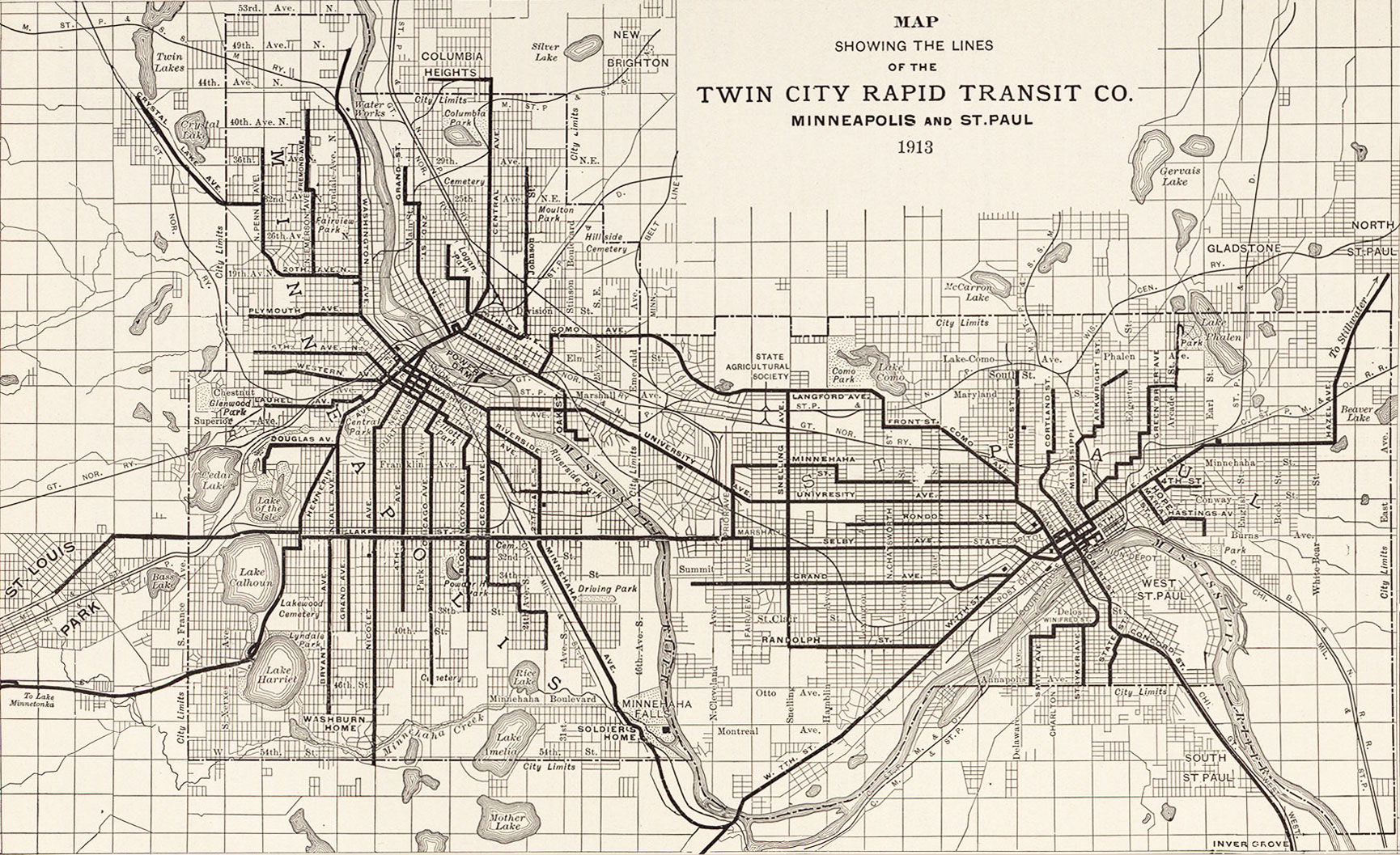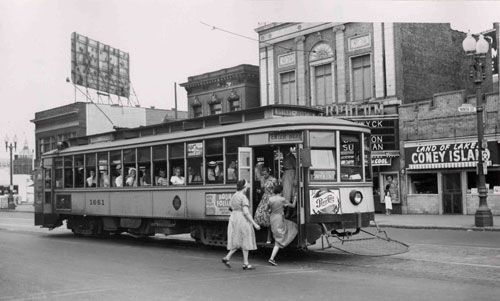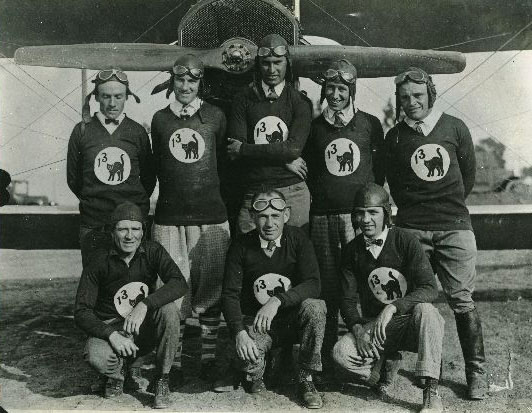
NODE 1: THE BLACK CATS
BACKGROUND
The Black Cats aerobatics troupe was first organized in 1924 with 13 members, headed by Bon MacDougall.
MEMBERSHIP: The roster is in constant flux with members coming and going.
Original members: Bon MacDougall, Al Johnson, Gladys Roy, Fronty Nichols, Heard McClelland, Chief White Eagle, Jack Frye, Paul Richter, Art Goebel, Spider Matlock, Gladys Ingle, Frank Lockhart, Reginald Denny, Babe Stapp, Bill Lind, and Sam Greenwald
HOME BASE: Burdett Airport – Los Angeles, CA
UNIFORM: Black sweater with a 13 Black Cats patch on the front and names on the back.
- Each name has 13 letters; if it doesn’t, nickname is added.
- White claw insignias; one for each time they’ve fell. (Under Black Cat rulings, after the eighth claw they can no longer fly with the troupe, because cats only have nine lives. Reginald Denny received two when joining the troupe because he’d been felled twice during the Great War; his joining may have also been a publicity stunt arranged by his studio.)
- The logo of the black cat was created by Bon MacDougall “in regard to the ancient Egyptian religion and it honored the sacred cat of Bubastes”. He flew with it before the formation of the group; adding the 13 for the group.
TRIVIA:
- Appeared in Howard Hughes’ Hells Angels and other 1920s films.
- Used no parachutes until 1927 (when it became law).
- Disbanded in 1929. (Members of the troupe went on to found TWA.)
ADDITIONAL RESOURCES:
LOCAL TOURING TROUPE: Consists of Gladys Roy (who is from Minnesota) and a handful of other 13 Black Cat members who are barnstorming as an independent tour across the Midwest.
AEROBATICS SHOW
START: If the timing makes it possible, the show has already started as the PCs approach.
- They see a low-flying plane pass overhead. Someone is dangling helplessly from it!
AEROBATICS SHOW: Play Aerobatic Show – Video (skip to 00:15).
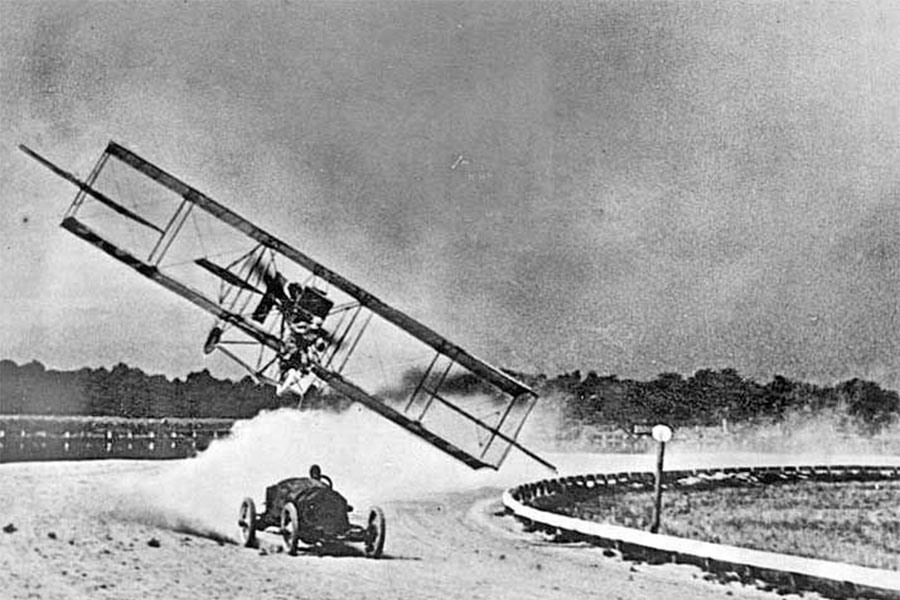
Aerobatics Show – Photo 1 (Race Car): Gladys Roy appears in a race car keeping pace with a plane.
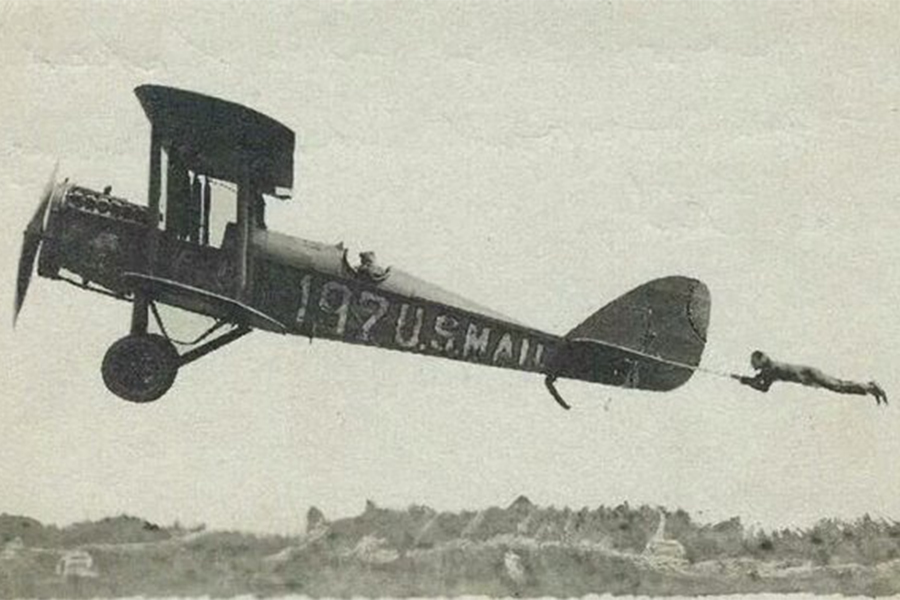
Aerobatics Show – Photo 2 (Climbing Aboard): Gladys stands up in the car, grabs the passing plane, and climbs aboard.

Aerobatics Show – Photo 3 (Wing Leap): Gladys jumps to another plane.
Aerobatics Show – Video: As she does so, a third plane comes up… this one having lost its wheel. Gladys collects a wheel from the second plane, transfers to the third, and replaces the wheel.

Aerobatics Show – Photo 4 (Dog): After changing the wheel, she climbs up onto the wing, and does a handstand. As she comes down, she’s confronted by an angry dog. The dog threatens her, she backs away…
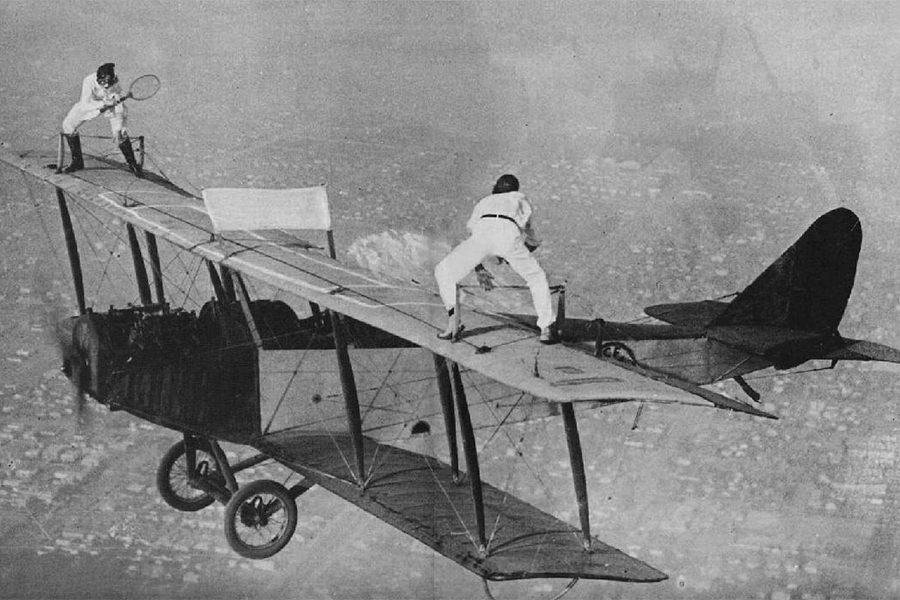
Aerobatics Show – Photo 5 (Tennis): … and leaps onto another plane! This one is outfitted with a tennis set, which she proceeds to play with another barnstormer.
The show continues like this for some time, with various stunt performers on both land and ground doing a variety of amazing feats. The planes themselves also do a variety of stunts and formation flying.
OTHER POSSIBLE STUNTS
- Flying through a building or crashing into a building, tree, object, etc.
- Blowing up planes in the air; passengers and pilot eject.
- Spinning airplanes (sometimes engulfed in fire) toward the ground, but not crashing.
- Loops while barnstormers stand on the tip of each wing.
- Flying lower and picking up hats with wing tips.
- Hanging from rope ladders or dangling upside down by ropes; swinging under the plane on wires.
- Parachute performances.
- Flying inverted for extended periods.
- Riding a bicycle dangling from a rope and then parachuting down to the ground.
- Landing upside down.
- Saloon brawls on wing tops.
- Staging a fight on the wing with one man getting knocked off with a punch.
CURTISS FIELD – FALCON HEIGHTS
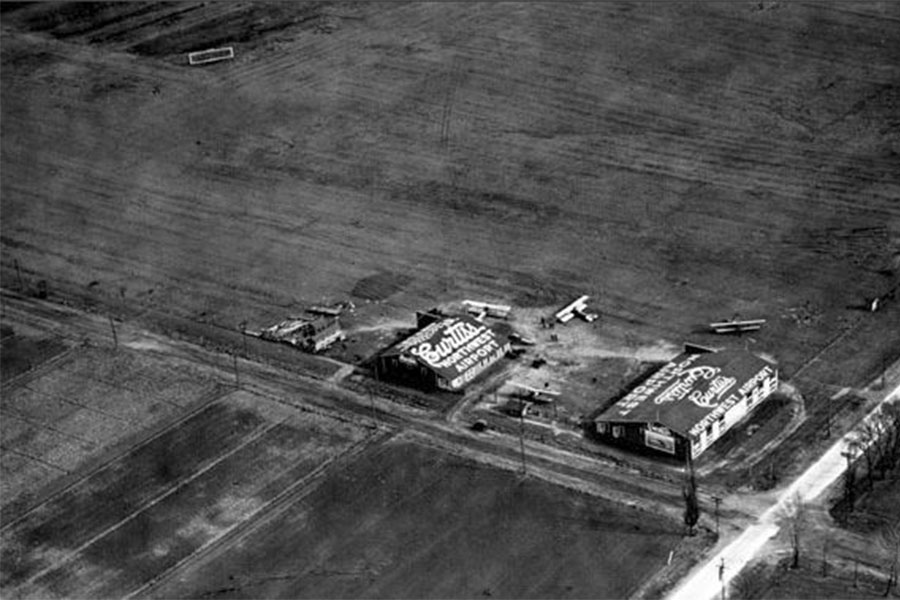
- Bill Kidder founded the airfield in April 1919; Minnesota’s first full-service airport.
- Licensed by the Curtiss Aeroplane and Motor Company for selling and servicing Curtiss airplanes.
- Snelling & Larpenteur Avenue (dirt-lane roads at the time) would be lined with cars on weekends to watch the planes. Just east of the Minnesota State Fairgrounds.
- Offers short plane rides for $15.
- Additional Resources: http://www.airfields-freeman.com/MN/Airfields_MN_Minneapolis.htm
GLADYS ROY
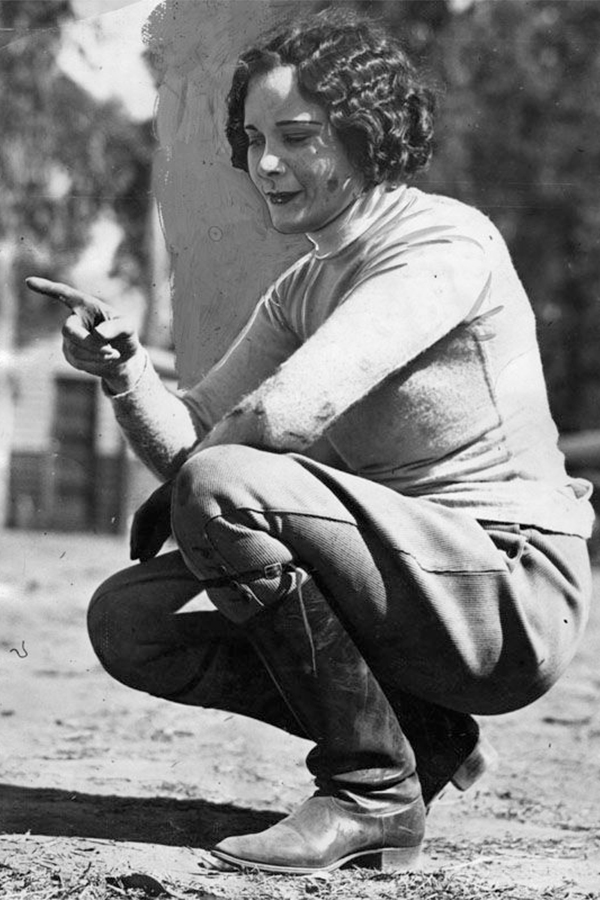
APPEARANCE:
- Prop: Photo of Gladys Roy
ROLEPLAYING NOTES
- Cool, confident, ironic and witty.
- Smokes.
- Quirks an eyebrow when amused.
BACKGROUND
- 23 years old.
- Started parachute jumping in 1921. Holds the world’s low record for parachute jump. (Has also jumped from 17,000 feet.)
- A barnstormer who’s performed across Minnesota, also in Hollywood and across the nation.
- Famous for dancing the Charleston and playing tennis on the upper wing of an airplane in flight.
- Western Vaudeville Manager’s Association is her booking agent.
- She was injured filming The Fighting Ranger in Hollywood earlier this year when she was thrown from a horse
CLUES
- She invited Alicia Corey to the party at James J. Hill House.
- She knows Rachel bought her whiskey from people associated with Kid Cann. (She recognized the Juicy Fruit flavoring as Minnesota 13.)
- She bought the liquor for the party (Minnesota 13) from a bootlegger named Oleg Andersson. She met with him a gin-joint called Pete’s on Hennepin Ave. just north of the river. (See Node 2: Minnesota 13.)
- She wasn’t drinking at the party last night because she had the aerobatics show this morning.
- Following Gladys: Gladys can be followed to Node 3: Fatima’s Shrine (she goes there after the aerobatics show).
LEVERAGED CLUES (anything proving her membership in the Sisterhood of Fatima)
- Can basically fill in all the background on Tanit and Ra.
- She knows that kids are being kidnapped by the Tanit cultists. (Alicia Corey told her.)
- She knows that the whiskey was tainted with Tanit parasites (although she didn’t know that when she brought it).
NOTES
- Gladys’ Bag: Searching through her stuff will turn up a Hamsa charm similar to the one Alicia Corey had at Hill House. (Can be used as leveraged clue.)
GLADYS ROY: Athletics 10, Driving 4, Firearms 3, Fleeing 6, Scuffling 8, Weapons 8, Health 10
Alertness Modifier: +2 (professional paranoia)
Stealth Modifier: 0
Weapons: Fists (-2), Switchblade (-1), .41 deringer (+0, 2 shots)
OTHER MEMBERS OF THE BLACK CATS
Have no real connection to events, but…
- Know that Gladys Roy was talking about going to Rachel’s party last night and having a grand old time.
- Alicia Corey went with Gladys and didn’t show up for work this morning. (Caused a headache with the box office.)
13 BLACK CATS FLYER
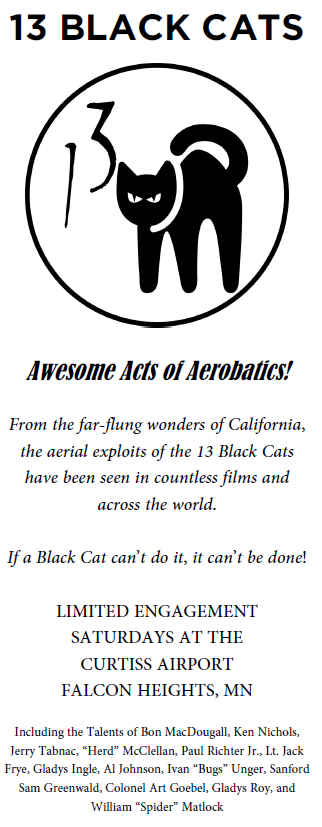
These flyers can be found at Hill House and also Node 5: Fatima’s Shrine. There’s also likely to be some found here at the show itself (brought by people who received them elsewhere, etc.).

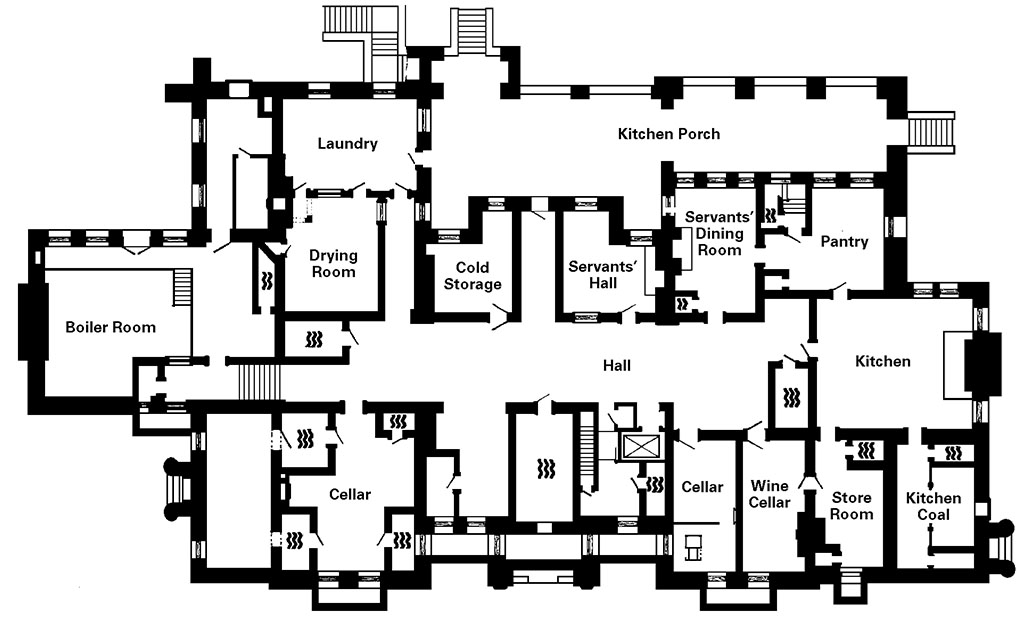
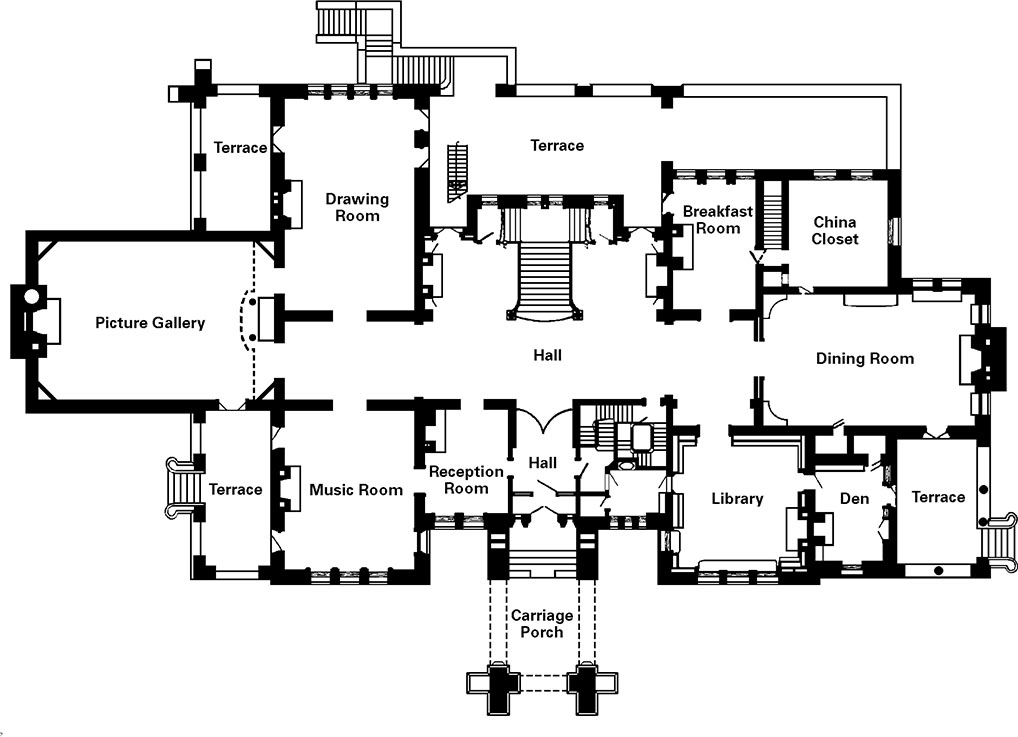
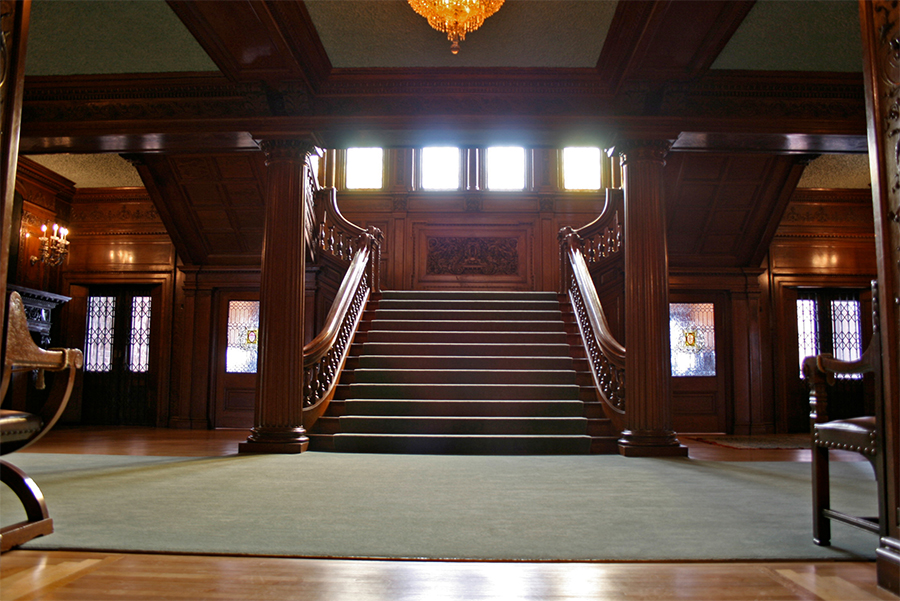
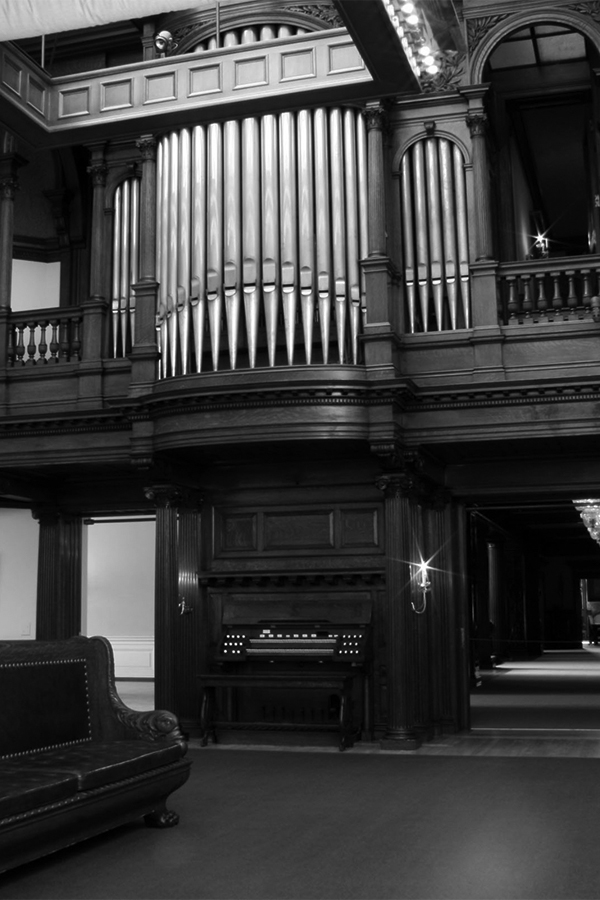
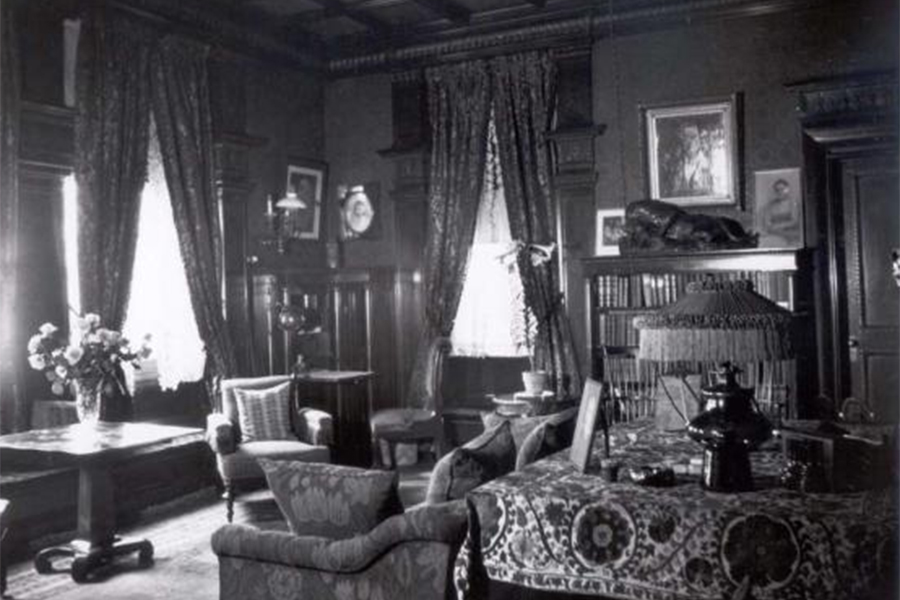
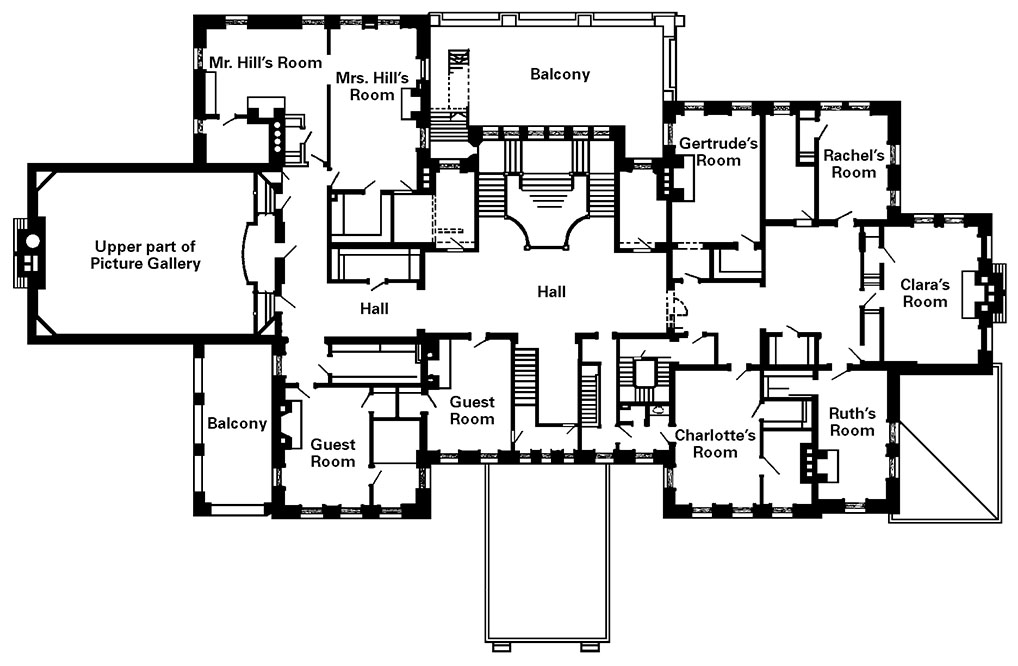

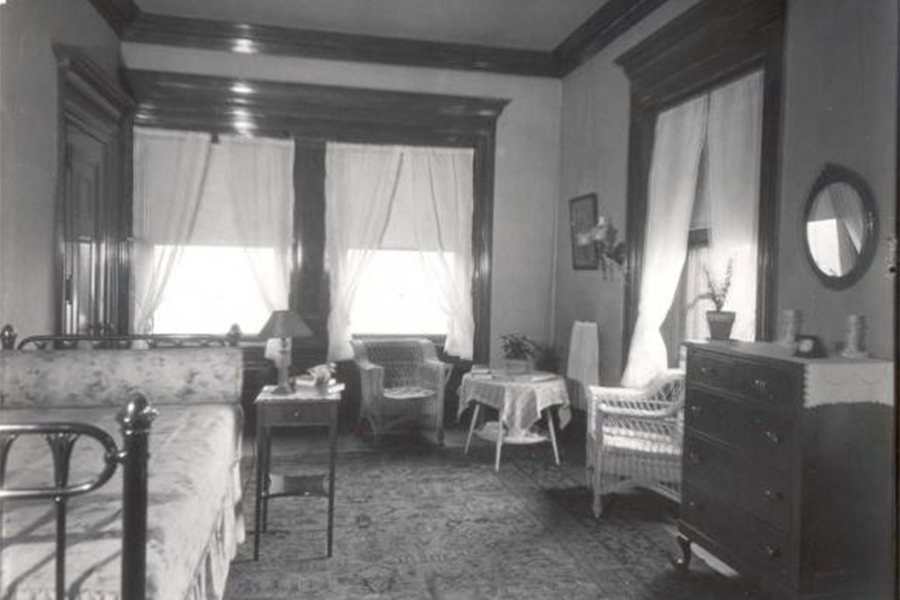
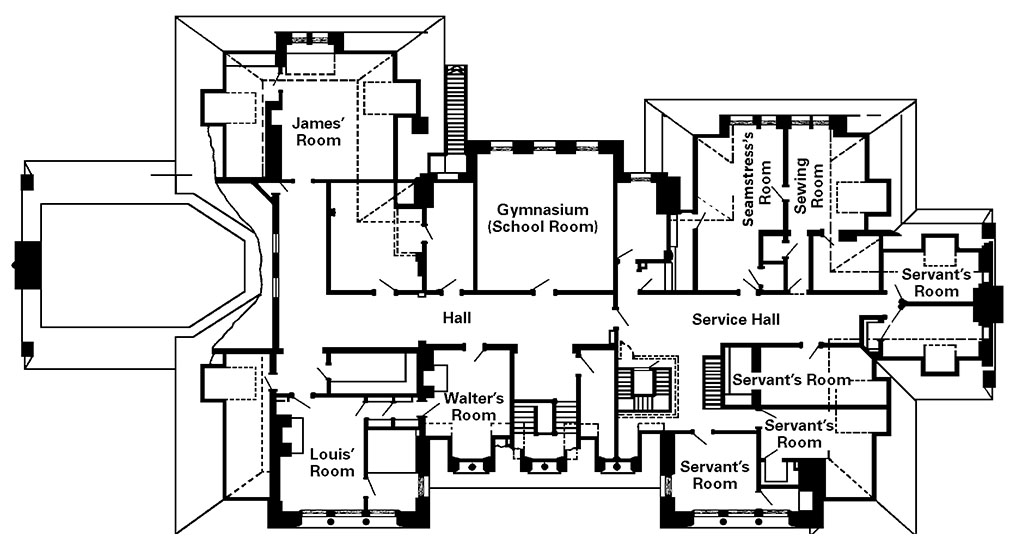
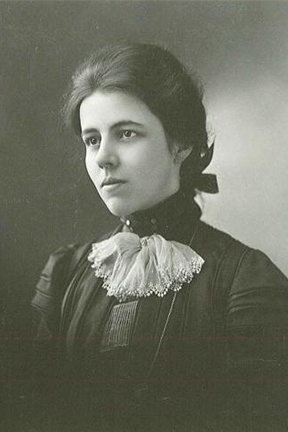
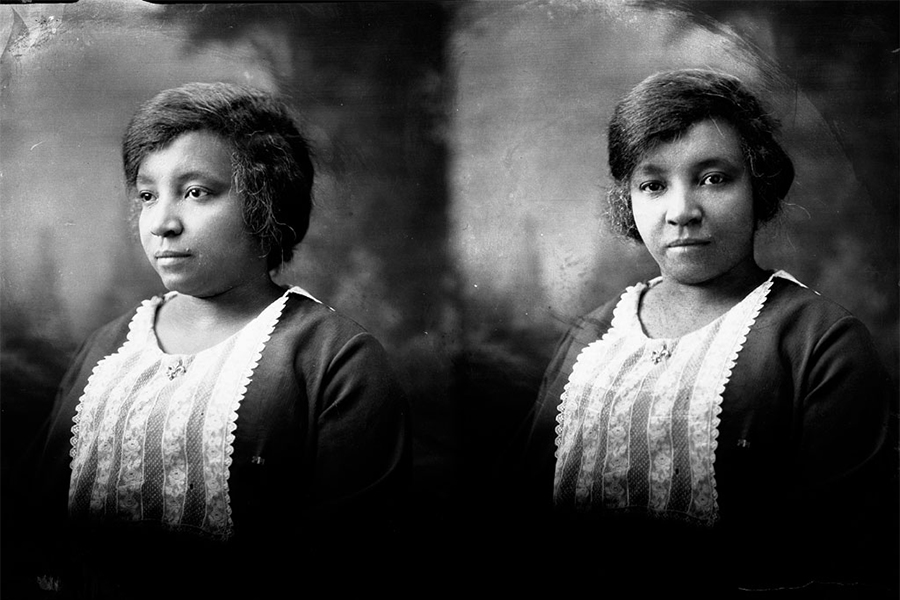
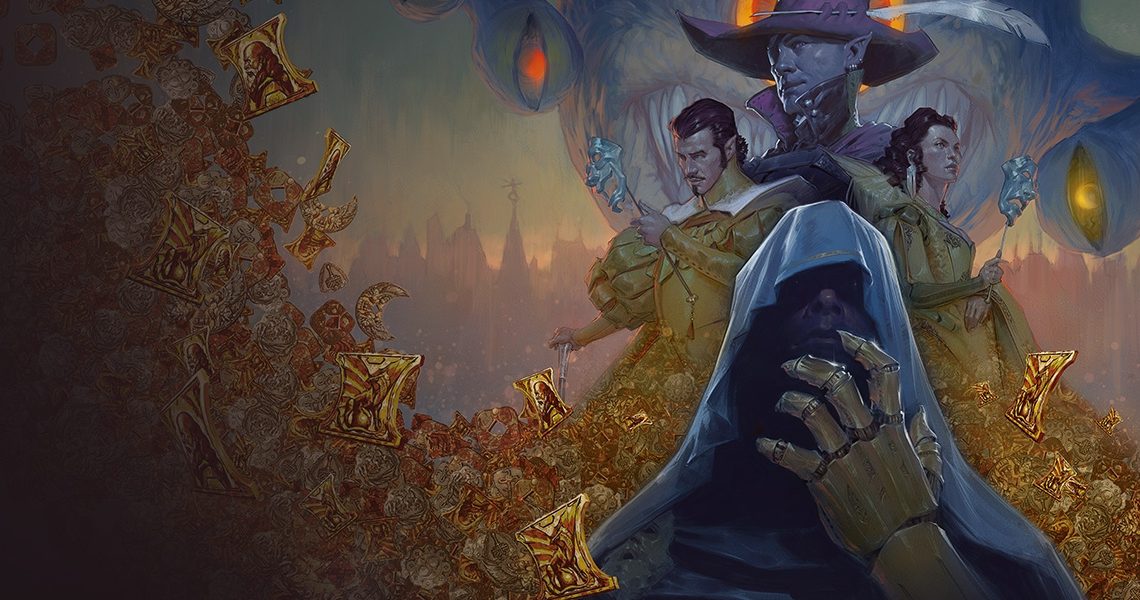
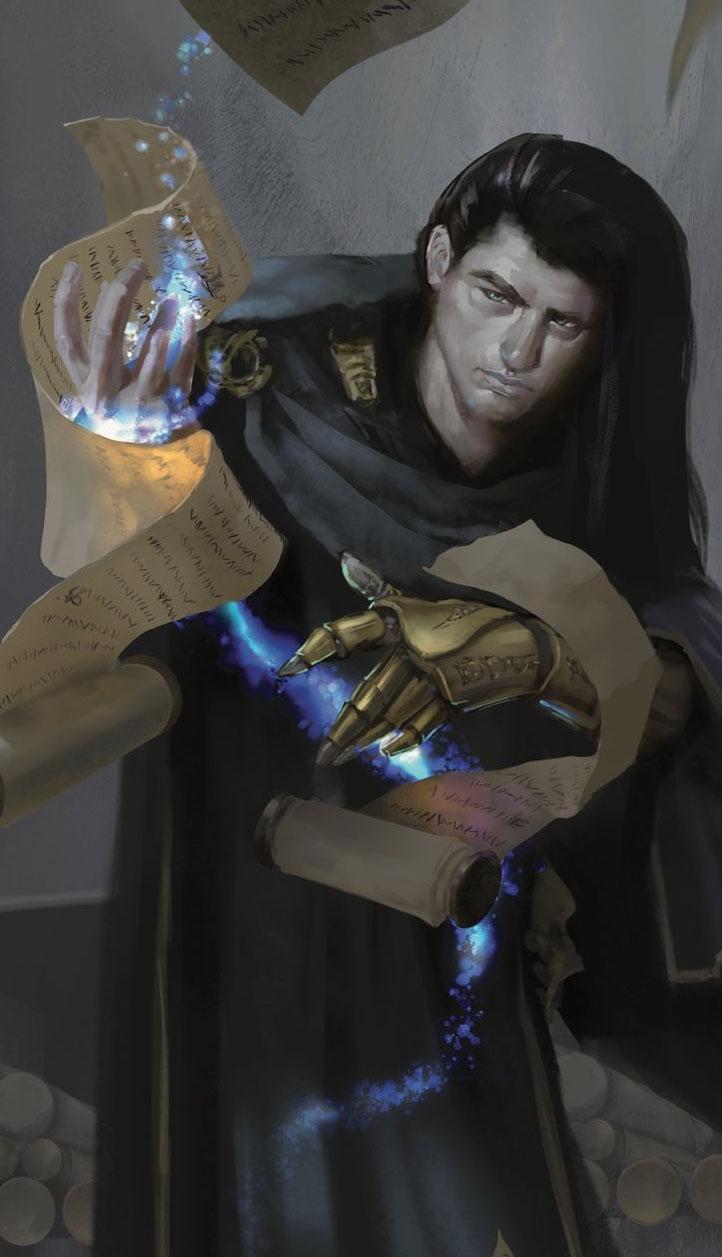
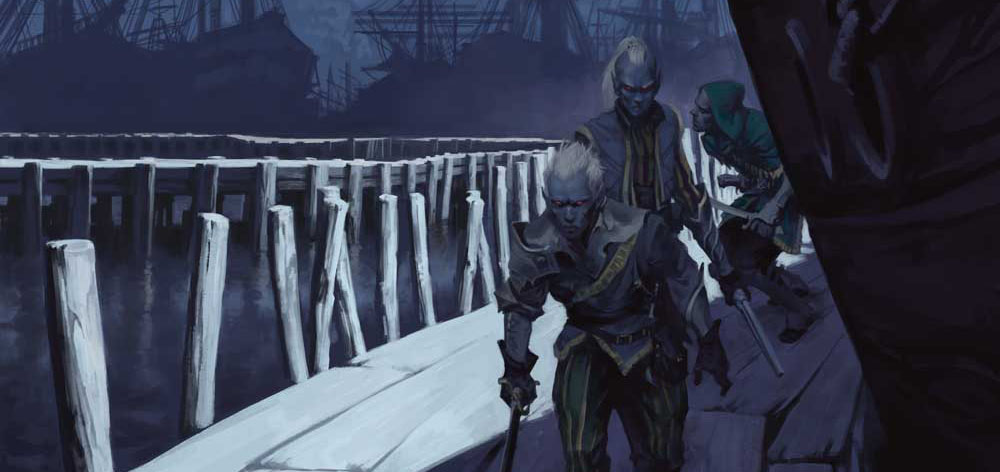
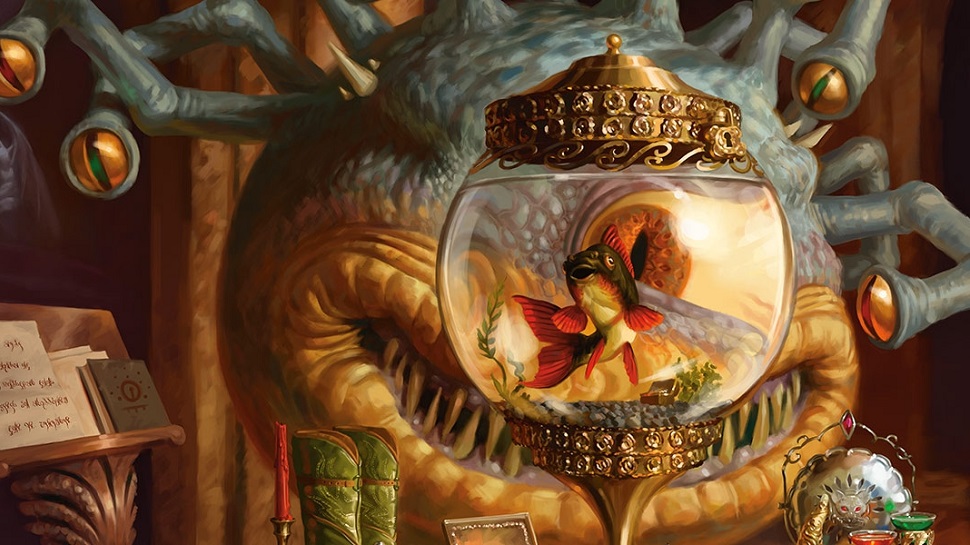
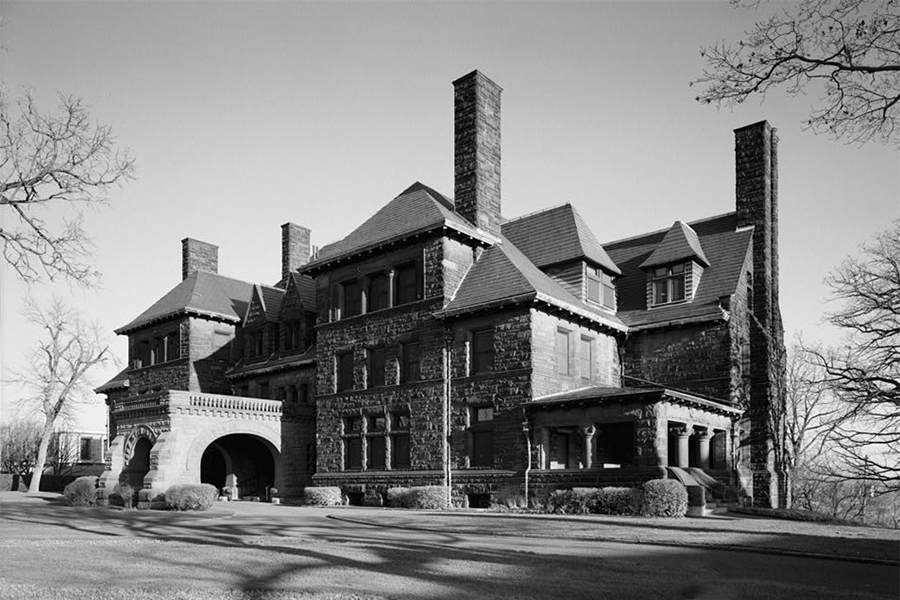
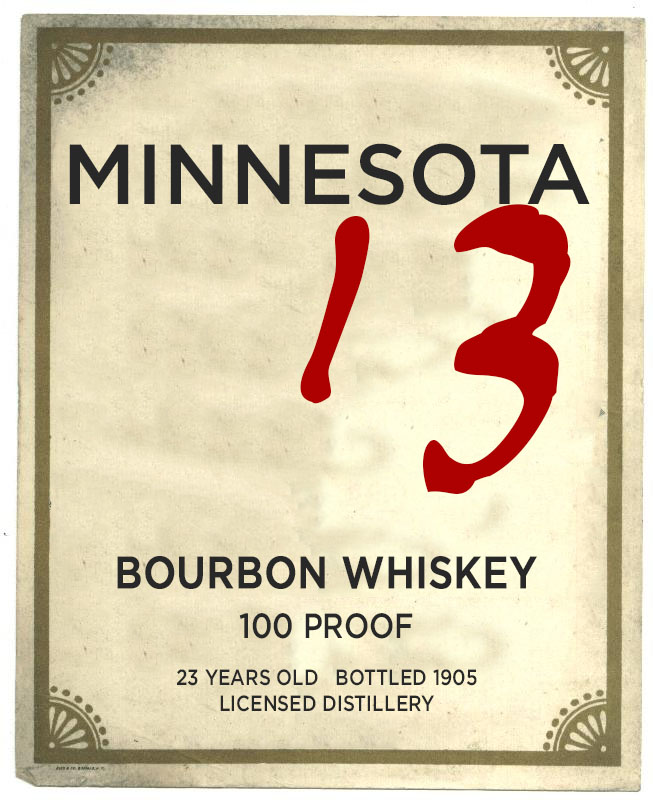
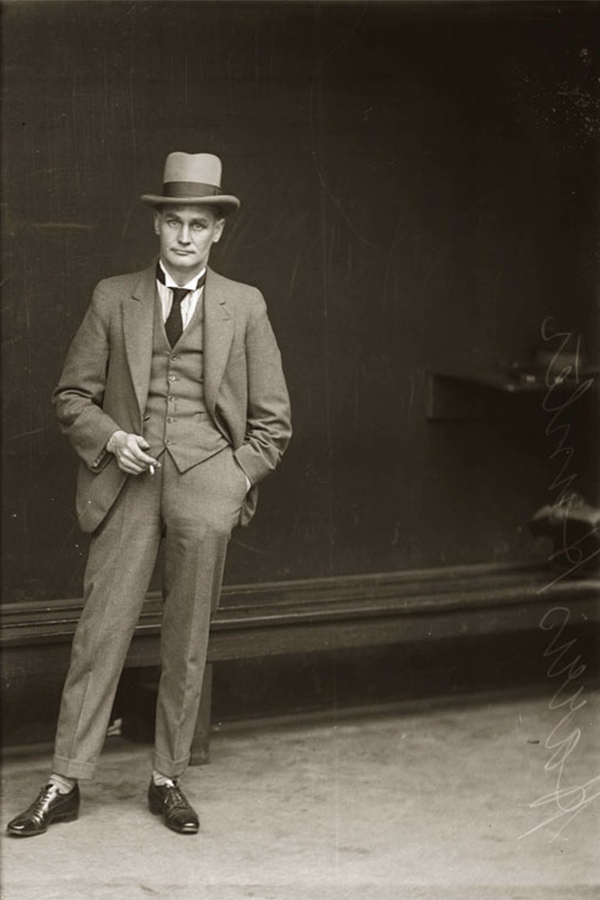 Detective Fred Watson:
Detective Fred Watson: